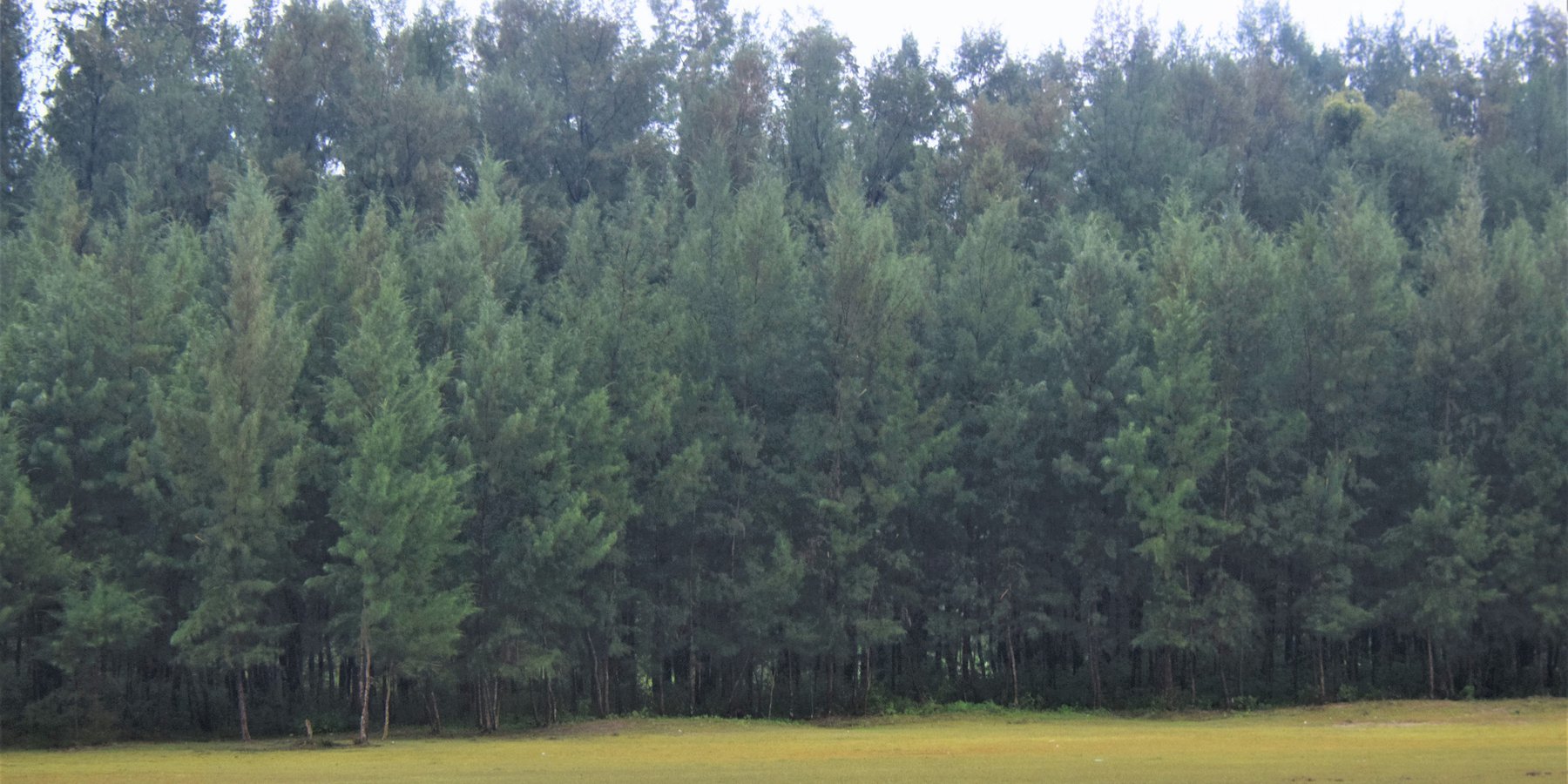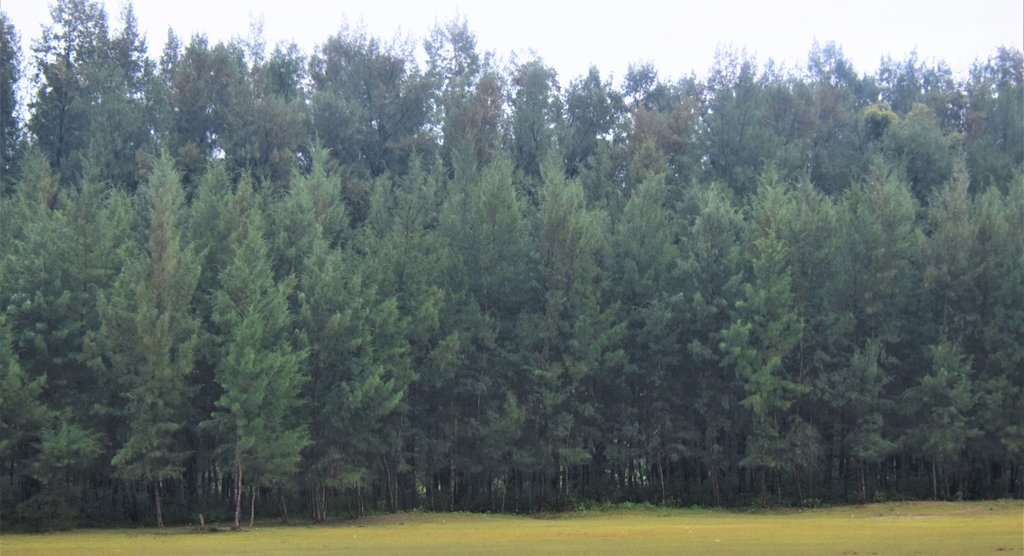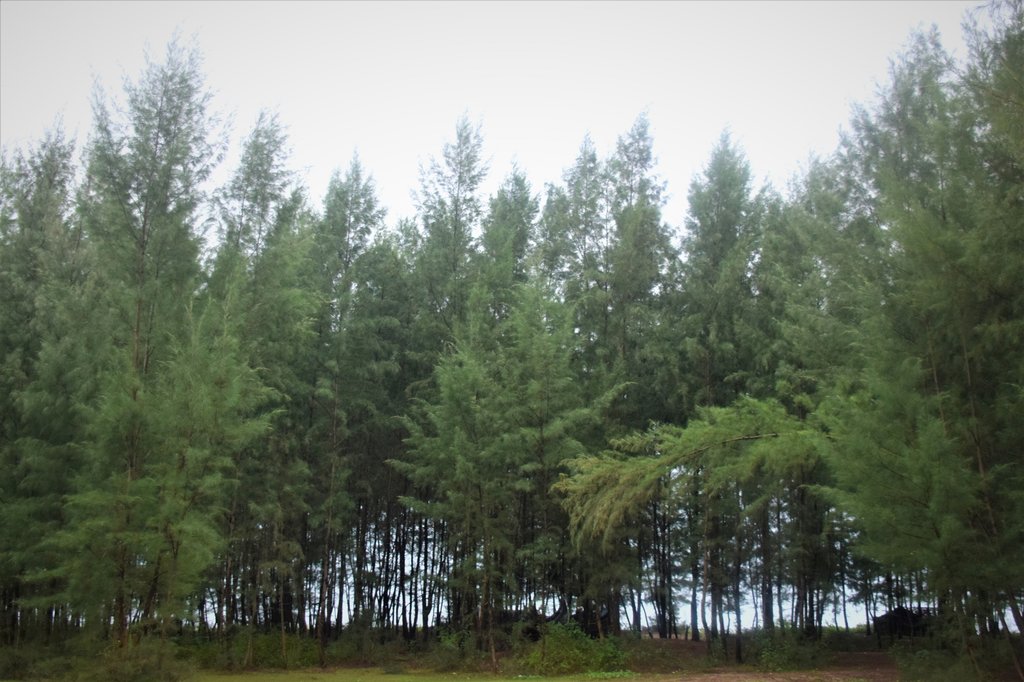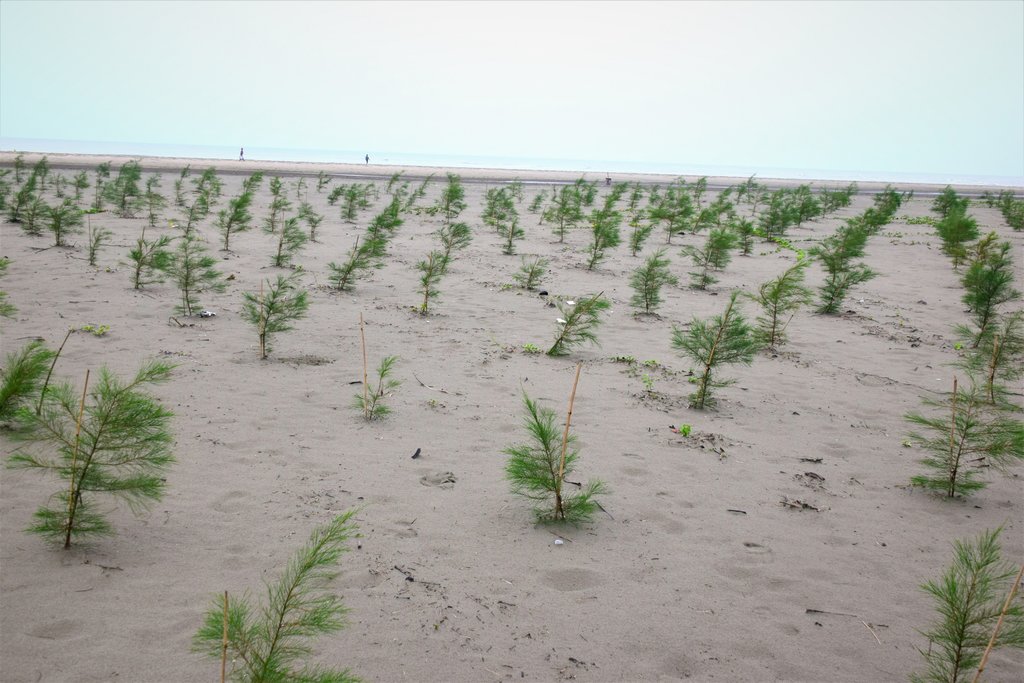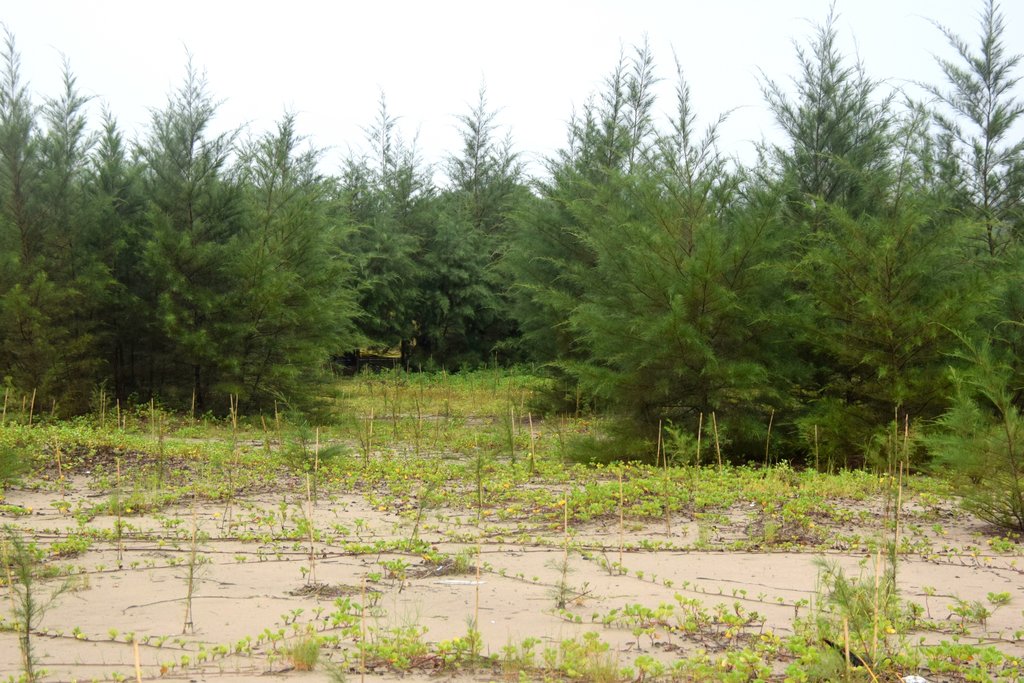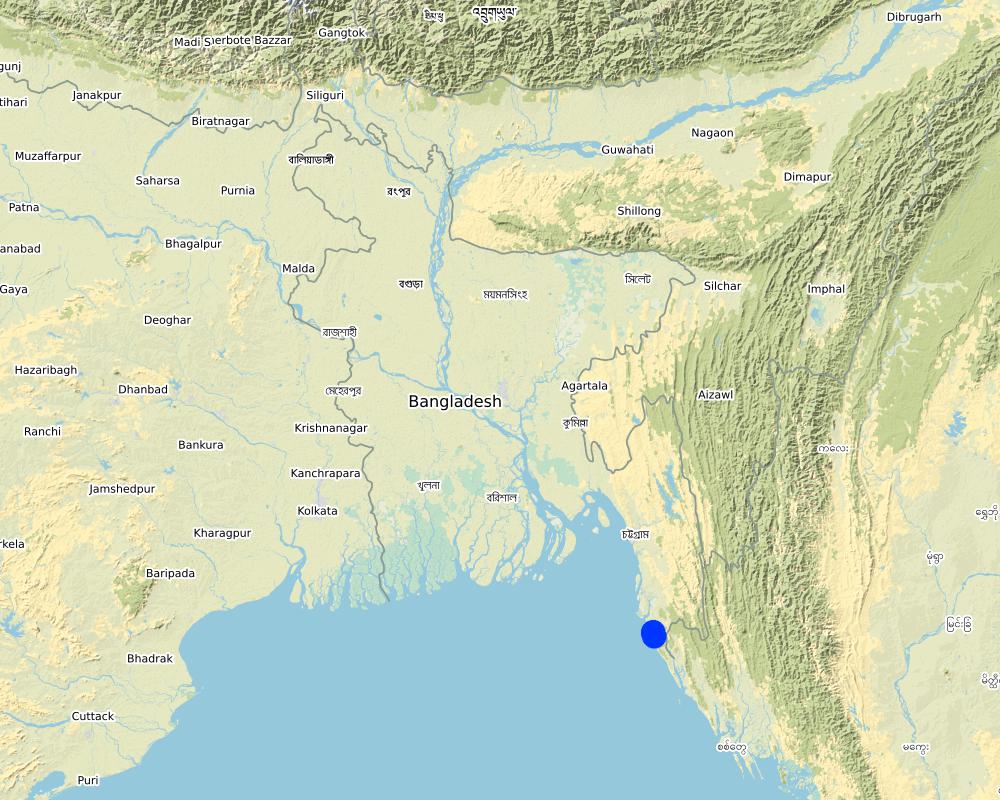Creating green shelter-belt through Jhau (Casuarina equisetifolia) plantation in coastal area [Bangladesh]
- Creation:
- Update:
- Compiler: Fazlay Arafat
- Editor: –
- Reviewers: Nicole Harari, Rima Mekdaschi Studer, Ursula Gaemperli
Coastal Greenbelt
technologies_4333 - Bangladesh
View sections
Expand all Collapse all1. General information
1.2 Contact details of resource persons and institutions involved in the assessment and documentation of the Technology
Key resource person(s)
land user:
Morshed Hoq Mahabub
Bangladesh Forest Department
Bangladesh
land user:
Mondol Dhiman
Bangladesh Forest Department
Bangladesh
land user:
Ali Md. Sobur
Local community people
Bangladesh
Name of project which facilitated the documentation/ evaluation of the Technology (if relevant)
Decision Support for Mainstreaming and Scaling out Sustainable Land Management (GEF-FAO / DS-SLM)Name of the institution(s) which facilitated the documentation/ evaluation of the Technology (if relevant)
Bangladesh Forest Department (Bangladesh Forest Department) - Bangladesh1.3 Conditions regarding the use of data documented through WOCAT
The compiler and key resource person(s) accept the conditions regarding the use of data documented through WOCAT:
Yes
1.4 Declaration on sustainability of the described Technology
Is the Technology described here problematic with regard to land degradation, so that it cannot be declared a sustainable land management technology?
No
2. Description of the SLM Technology
2.1 Short description of the Technology
Definition of the Technology:
Creation of green shelter-belt along the coast line through plantation of Jhau (Casuarina equisetifolia) to reduce vulnerabilities and hazards of extreme weather events like cyclones.
2.2 Detailed description of the Technology
Description:
The coastal zone of Bangladesh is extremely vulnerable to the impact of climate change. The coastal populations are mostly poor and some of them are landless with livelihoods connected to agriculture, fishing, shrimp farming, salt farming etc. Past devastating cyclones have killed thousands of people and destroyed homes and infrastructure. Creation of green shelter-belts, including mangrove and non-mangrove plantations, reduces the vulnerabilities and hazards related to extreme weather events like cyclones and storm surges. Afforestation along coastal areas is usually cheaper and ecologically more beneficial than other measures and serves to conserve biodiversity and stabilize newly accreted land. As a general guideline, a shelter-belt protects an area over a distance up to its own height on the windward side and up to 10 times its height on the leeward side, depending on the strength of the wind.
The current sustainable land management practice takes particular account of the Jhau plantation along the coastline of Himchari National Park of Cox's Bazar. Jhau (Casuarina equisetifolia) is one of the most promising non-mangrove species for creating shelter-belts and the Bangladesh Forest Department has been planting them in raised coastal lands and embankments since the 1990s. Casuarina equisetifolia is an evergreen tree with a finely branched, feathery crown and usually growing around 35 meters tall. It is fast growing, salt tolerant, grows in sand and can also tolerate occasional inundation by sea water at extremely high tides. Many areas where the species naturally occurs are susceptible to tropical cyclones, and its general tolerance to strong winds has encouraged its use in protective planting. The most common uses of C. equisetifolia are for coastal sand dune stabilization, shelter-belts, land reclamation and erosion control. The wood is hard and used for house posts, rafters, electric poles, tool handles, etc. It has been called ‘the best firewood in the world’ and also produces high-quality charcoal.
Coastal plantation with Jhau is a soft adaptation measure that has significantly contributed to reduce the loss of lives and properties against tropical cyclones and storm surges in the coastal areas. This species can be planted in coastline, roadside, embankment and marginal lands for creating dense vegetation, which can function as windbreak and combat tidal surges. The spacing used in this shelter-belt plantation along the coastline of Himchari National Park is 2m x 2m and 2500 trees are planted per hectare area. The examined shelter-belt plantations are approximately 1.5km long and 150m wide. The major activities required to establish the plantation were: nursery development (seed collection, site clearing, leveling and fencing, drainage arrangement, bed preparation, making overhead shed, poly-bag preparation, potting seeds, manuring, irrigation, weed control), site preparation (prepare plantation site map with GPS, weeding, marking pit location with sticks, carrying of seedlings to the site) and tree planting (digging of planting holes, tying up of plants with stick for support, application of fertilizers and compost). Weeding and vacancy filling were the maintenance activities which required up to three years after plantation establishment. All those activities carried out by the forest department with the financial help from world bank project fund. The local communities were involved as paid labour for nursery development, plantation and maintenance activities. Local people can only collect fuel wood from the plantation as its soul purpose is to act as shelter-belt from cyclones and tidal surge.
As the plantation site is on the coastline and beside the Himchari National Park, it turns to a tourist spot now for its scenic beauty. Local people involved with various sorts of tourist oriented small-scale business here e.g. parasailing, boating, restaurant, cottage industries, shops, etc. Though the initial establishment of Jhau stand need intensive care, it is functioning as a good wind breaker and combating with tidal surge along with creating alternate livelihood opportunities for local people.
2.3 Photos of the Technology
2.5 Country/ region/ locations where the Technology has been applied and which are covered by this assessment
Country:
Bangladesh
Region/ State/ Province:
Cox's Bazar, Chittagong
Further specification of location:
Hiimchari
Specify the spread of the Technology:
- evenly spread over an area
If precise area is not known, indicate approximate area covered:
- 0.1-1 km2
Is/are the technology site(s) located in a permanently protected area?
No
Map
×2.6 Date of implementation
If precise year is not known, indicate approximate date:
- 10-50 years ago
2.7 Introduction of the Technology
Specify how the Technology was introduced:
- through projects/ external interventions
Comments (type of project, etc.):
Under the Coastal Green Belt project and Climate Resilient Participatory Afforestation and Reforestation Project of World Bank, Jhau have been planted along the coastline to function as wind break and combat tidal surges
3. Classification of the SLM Technology
3.1 Main purpose(s) of the Technology
- reduce, prevent, restore land degradation
- reduce risk of disasters
- mitigate climate change and its impacts
- create beneficial economic impact
3.2 Current land use type(s) where the Technology is applied
Land use mixed within the same land unit:
No

Forest/ woodlands
- Tree plantation, afforestation
Tree plantation, afforestation: Specify origin and composition of species:
- Monoculture exotic variety
Type of tree plantation, afforestation:
- tropical rain forest plantation - Pinus spp.
Type of tree:
- Casuarina equisetifolia
Are the trees specified above deciduous or evergreen?
- evergreen
Products and services:
- Fuelwood
- Nature conservation/ protection
- Recreation/ tourism
- Protection against natural hazards
3.3 Has land use changed due to the implementation of the Technology?
Has land use changed due to the implementation of the Technology?
- Yes (Please fill out the questions below with regard to the land use before implementation of the Technology)
Land use mixed within the same land unit:
No

Unproductive land
Specify:
Accreted coastal land along the shore.
Remarks:
The land remain barren and submerged in high tide.
3.4 Water supply
Water supply for the land on which the Technology is applied:
- rainfed
Comments:
Regularly inundated by tidal water
3.5 SLM group to which the Technology belongs
- forest plantation management
- windbreak/ shelterbelt
- ecosystem-based disaster risk reduction
3.6 SLM measures comprising the Technology

vegetative measures
- V1: Tree and shrub cover
3.7 Main types of land degradation addressed by the Technology

soil erosion by water
- Wc: coastal erosion

soil erosion by wind
- Et: loss of topsoil
3.8 Prevention, reduction, or restoration of land degradation
Specify the goal of the Technology with regard to land degradation:
- reduce land degradation
4. Technical specifications, implementation activities, inputs, and costs
4.1 Technical drawing of the Technology
Technical specifications (related to technical drawing):
Plant spacing between the Jhau trees is 2mx2m.
4.2 General information regarding the calculation of inputs and costs
Specify how costs and inputs were calculated:
- per Technology area
Indicate size and area unit:
1 hectare
If using a local area unit, indicate conversion factor to one hectare (e.g. 1 ha = 2.47 acres): 1 ha =:
2.47 acres
other/ national currency (specify):
BDT
If relevant, indicate exchange rate from USD to local currency (e.g. 1 USD = 79.9 Brazilian Real): 1 USD =:
83.0
Indicate average wage cost of hired labour per day:
500
4.3 Establishment activities
| Activity | Timing (season) | |
|---|---|---|
| 1. | Nursery development (seed collection, site clearing, leveling and fencing, drainage arrangement, bed preparation, making overhead shed, poly-bag preparation, potting seeds, manuring, irrigation, weed control) | September-October |
| 2. | Site preparation (prepare plantation site map with GPS, weeding, marking pit location with sticks, carrying of seedlings to the site) | April-May |
| 3. | Tree planting (digging of planting holes, tying up of plants with stick for support, application of fertilizers and compost) | June-July |
4.4 Costs and inputs needed for establishment
| Specify input | Unit | Quantity | Costs per Unit | Total costs per input | % of costs borne by land users | |
|---|---|---|---|---|---|---|
| Labour | Nursery preparation | person-days | 17.0 | 500.0 | 8500.0 | |
| Labour | Site preparation | person-days | 7.0 | 500.0 | 3500.0 | |
| Labour | Planting activities | person-days | 22.0 | 500.0 | 11000.0 | |
| Equipment | Bucket | pieces | 10.0 | 150.0 | 1500.0 | |
| Equipment | Spade | pieces | 8.0 | 300.0 | 2400.0 | |
| Equipment | Scissor | pieces | 2.0 | 150.0 | 300.0 | |
| Equipment | Knife | pieces | 2.0 | 200.0 | 400.0 | |
| Fertilizers and biocides | Cow dung | cubic meter | 1.0 | 1200.0 | 1200.0 | |
| Fertilizers and biocides | Urea | kg | 6.0 | 35.0 | 210.0 | |
| Fertilizers and biocides | MoP | kg | 6.0 | 30.0 | 180.0 | |
| Fertilizers and biocides | TSP | kg | 6.0 | 40.0 | 240.0 | |
| Fertilizers and biocides | Compost | kg | 1250.0 | 4.0 | 5000.0 | |
| Construction material | Poly bag | pieces | 3000.0 | 0.8 | 2400.0 | |
| Construction material | Bamboo stick | pieces | 2600.0 | 2.0 | 5200.0 | |
| Construction material | Signboard | Lump sum | 1.0 | 1000.0 | 1000.0 | |
| Total costs for establishment of the Technology | 43030.0 | |||||
| Total costs for establishment of the Technology in USD | 518.43 | |||||
If land user bore less than 100% of costs, indicate who covered the remaining costs:
Cost are not borne by the forest department (land owner) but by the project of World Bank
4.5 Maintenance/ recurrent activities
| Activity | Timing/ frequency | |
|---|---|---|
| 1. | weeding | 3 times in a year |
| 2. | vacancy filling | June-July |
4.6 Costs and inputs needed for maintenance/ recurrent activities (per year)
| Specify input | Unit | Quantity | Costs per Unit | Total costs per input | % of costs borne by land users | |
|---|---|---|---|---|---|---|
| Labour | 1st year Weeding (6 labor/weeding/Ha.) 3 times | person-days | 18.0 | 500.0 | 9000.0 | |
| Labour | 2nd year Weeding (5 labor/weeding/Ha.) 3 times | person-days | 15.0 | 500.0 | 7500.0 | |
| Labour | 3rd year Weeding (5 labor/weeding/Ha.) 2 times ng and cleaning (5 labor/weeding/Ha.) 1 time | person-days | 10.0 | 500.0 | 5000.0 | |
| Labour | Vacancy filling | person-days | 5.0 | 500.0 | 2500.0 | |
| Equipment | Bamboo stick | pieces | 1000.0 | 2.0 | 2000.0 | |
| Total costs for maintenance of the Technology | 26000.0 | |||||
| Total costs for maintenance of the Technology in USD | 313.25 | |||||
If land user bore less than 100% of costs, indicate who covered the remaining costs:
Cost are not borne by the forest department (land owner) but by the project of World Bank
4.7 Most important factors affecting the costs
Describe the most determinate factors affecting the costs:
Labor
5. Natural and human environment
5.1 Climate
Annual rainfall
- < 250 mm
- 251-500 mm
- 501-750 mm
- 751-1,000 mm
- 1,001-1,500 mm
- 1,501-2,000 mm
- 2,001-3,000 mm
- 3,001-4,000 mm
- > 4,000 mm
Agro-climatic zone
- humid
5.2 Topography
Slopes on average:
- flat (0-2%)
- gentle (3-5%)
- moderate (6-10%)
- rolling (11-15%)
- hilly (16-30%)
- steep (31-60%)
- very steep (>60%)
Landforms:
- plateau/plains
- ridges
- mountain slopes
- hill slopes
- footslopes
- valley floors
Altitudinal zone:
- 0-100 m a.s.l.
- 101-500 m a.s.l.
- 501-1,000 m a.s.l.
- 1,001-1,500 m a.s.l.
- 1,501-2,000 m a.s.l.
- 2,001-2,500 m a.s.l.
- 2,501-3,000 m a.s.l.
- 3,001-4,000 m a.s.l.
- > 4,000 m a.s.l.
Indicate if the Technology is specifically applied in:
- not relevant
5.3 Soils
Soil depth on average:
- very shallow (0-20 cm)
- shallow (21-50 cm)
- moderately deep (51-80 cm)
- deep (81-120 cm)
- very deep (> 120 cm)
Soil texture (topsoil):
- coarse/ light (sandy)
Soil texture (> 20 cm below surface):
- coarse/ light (sandy)
Topsoil organic matter:
- low (<1%)
5.4 Water availability and quality
Ground water table:
5-50 m
Availability of surface water:
excess
Water quality (untreated):
unusable
Water quality refers to:
both ground and surface water
Is water salinity a problem?
Yes
Specify:
Due to regular tidal inundation the soil become saline and only support to grow few saline tolerant plant species
Is flooding of the area occurring?
Yes
Regularity:
frequently
5.5 Biodiversity
Species diversity:
- low
Habitat diversity:
- low
5.6 Characteristics of land users applying the Technology
Sedentary or nomadic:
- Sedentary
Market orientation of production system:
- mixed (subsistence/ commercial)
Off-farm income:
- 10-50% of all income
Relative level of wealth:
- poor
- average
Individuals or groups:
- employee (company, government)
Level of mechanization:
- manual work
Gender:
- women
- men
Age of land users:
- youth
- middle-aged
- elderly
5.7 Average area of land used by land users applying the Technology
- < 0.5 ha
- 0.5-1 ha
- 1-2 ha
- 2-5 ha
- 5-15 ha
- 15-50 ha
- 50-100 ha
- 100-500 ha
- 500-1,000 ha
- 1,000-10,000 ha
- > 10,000 ha
Is this considered small-, medium- or large-scale (referring to local context)?
- small-scale
5.8 Land ownership, land use rights, and water use rights
Land ownership:
- state
Land use rights:
- open access (unorganized)
Water use rights:
- open access (unorganized)
Are land use rights based on a traditional legal system?
No
5.9 Access to services and infrastructure
health:
- poor
- moderate
- good
education:
- poor
- moderate
- good
technical assistance:
- poor
- moderate
- good
employment (e.g. off-farm):
- poor
- moderate
- good
markets:
- poor
- moderate
- good
energy:
- poor
- moderate
- good
roads and transport:
- poor
- moderate
- good
drinking water and sanitation:
- poor
- moderate
- good
financial services:
- poor
- moderate
- good
6. Impacts and concluding statements
6.1 On-site impacts the Technology has shown
Socio-economic impacts
Production
wood production
non-wood forest production
Comments/ specify:
leaves and fruits are used for ornamental purposes
risk of production failure
Comments/ specify:
Jhau tree performs better than other trees for stabilization of coastal sand dune
product diversity
Comments/ specify:
the plantation site now become a picnic spot for its scenic beauty (tourism has been attracted because of the coastal plantation)
production area
land management
Income and costs
diversity of income sources
Comments/ specify:
The area attract more tourists now and local people involved in various type of small scale business here
workload
Comments/ specify:
The workload reduced due to diversified income source of local community
Socio-cultural impacts
cultural opportunities
Comments/ specify:
New year celebration program now organized here every year
recreational opportunities
Comments/ specify:
This area now become a tourist hotspot
SLM/ land degradation knowledge
Comments/ specify:
Learn about the stabilization of sand dunes
Ecological impacts
Soil
soil cover
soil loss
soil accumulation
soil organic matter/ below ground C
Biodiversity: vegetation, animals
Vegetation cover
biomass/ above ground C
beneficial species
Comments/ specify:
The green belt support home for native birds
habitat diversity
Climate and disaster risk reduction
flood impacts
impacts of cyclones, rain storms
emission of carbon and greenhouse gases
wind velocity
6.2 Off-site impacts the Technology has shown
wind transported sediments
Comments/ specify:
protection of agricultural land on back side of shelter-belt
impact of greenhouse gases
6.3 Exposure and sensitivity of the Technology to gradual climate change and climate-related extremes/ disasters (as perceived by land users)
Climate-related extremes (disasters)
Meteorological disasters
| How does the Technology cope with it? | |
|---|---|
| tropical storm | well |
| local rainstorm | very well |
| local thunderstorm | very well |
Hydrological disasters
| How does the Technology cope with it? | |
|---|---|
| storm surge/ coastal flood | very well |
6.4 Cost-benefit analysis
How do the benefits compare with the establishment costs (from land users’ perspective)?
Short-term returns:
slightly negative
Long-term returns:
positive
How do the benefits compare with the maintenance/ recurrent costs (from land users' perspective)?
Short-term returns:
slightly negative
Long-term returns:
positive
6.5 Adoption of the Technology
- 1-10%
Of all those who have adopted the Technology, how many did so spontaneously, i.e. without receiving any material incentives/ payments?
- 91-100%
Comments:
Forest department adopted the green-belt plantation technique with Jhau from the projects and now replicating the practice in other coastline areas with government fund
6.6 Adaptation
Has the Technology been modified recently to adapt to changing conditions?
No
6.7 Strengths/ advantages/ opportunities of the Technology
| Strengths/ advantages/ opportunities in the land user’s view |
|---|
| Function as wind break and combat tidal surges |
| Increases the soil fertility of the degraded land through nutrient cycle |
| Strengths/ advantages/ opportunities in the compiler’s or other key resource person’s view |
|---|
| Biodiversity conservation through habitat improvement |
| Increase carbon sequestration |
6.8 Weaknesses/ disadvantages/ risks of the Technology and ways of overcoming them
| Weaknesses/ disadvantages/ risks in the land user’s view | How can they be overcome? |
|---|---|
| Initial establishment of stand need intensive care and risk of failure is high | Increase technical capabilities of forest officials |
| Weaknesses/ disadvantages/ risks in the compiler’s or other key resource person’s view | How can they be overcome? |
|---|---|
| Jhau tree is not a natural vegetation for the sand dunes | Introduce other indigenous salinity tolerant plant species in the green shelter belt |
7. References and links
7.1 Methods/ sources of information
- field visits, field surveys
Number of informants: 04
- interviews with land users
Number of informants: 03
- interviews with SLM specialists/ experts
Number of informants: 01
When were the data compiled (in the field)?
17/12/2018
7.2 References to available publications
Title, author, year, ISBN:
Islam, S. A. & Rahman, M. M. (2015). Coastal afforestation in Bangladesh to combat climate change induced hazards. Journal of Science, Technology & Environment Informatics, 02(01), 13–25, 2015
Available from where? Costs?
2015, Journal BiNET. This is an open access article distributed under terms of the Creative Common Attribution 4.0 International License.
7.4 General comments
The questionnaire covered all the technical specifications of this SLM technology.
Links and modules
Expand all Collapse allLinks
No links
Modules
No modules


